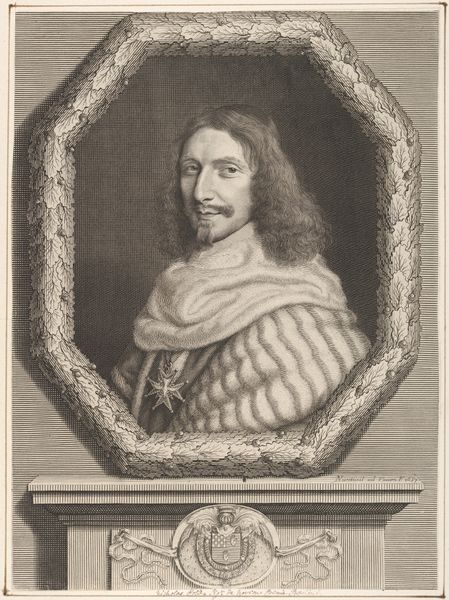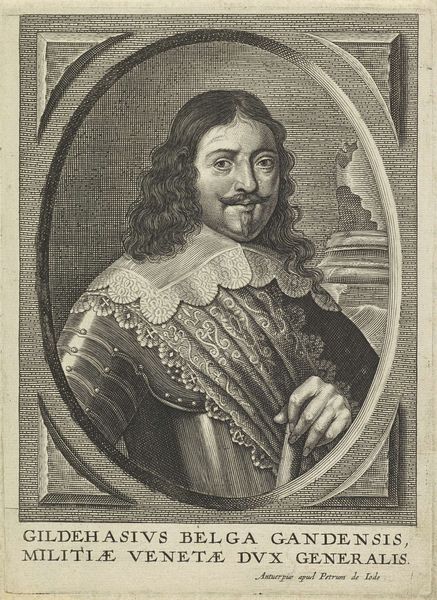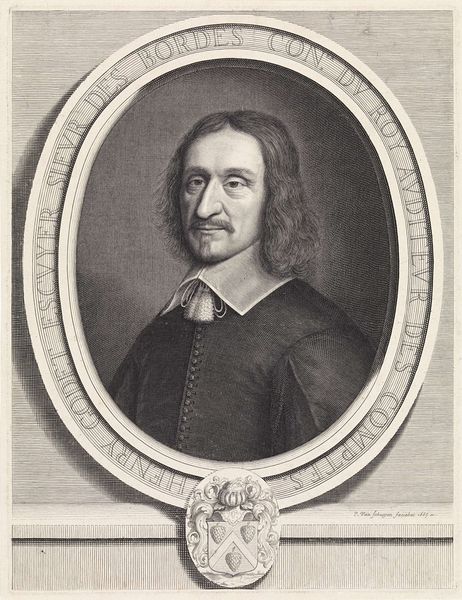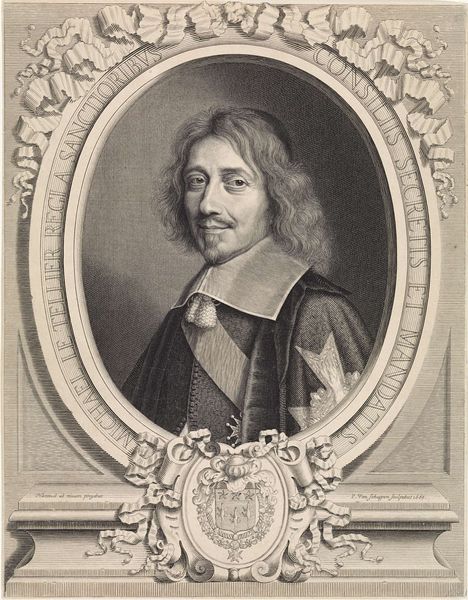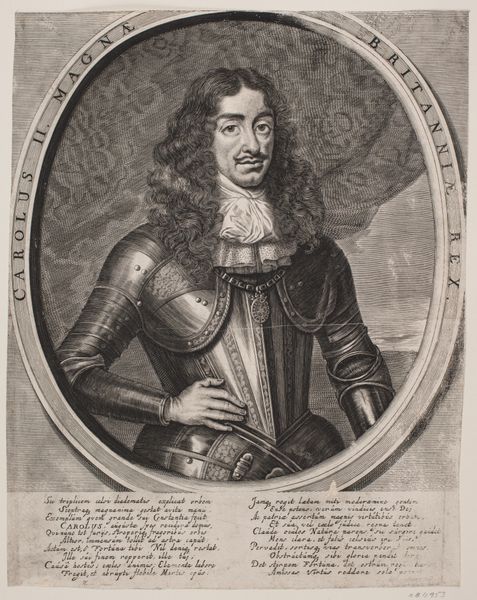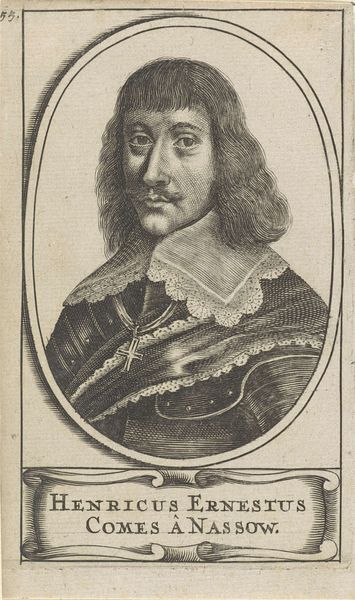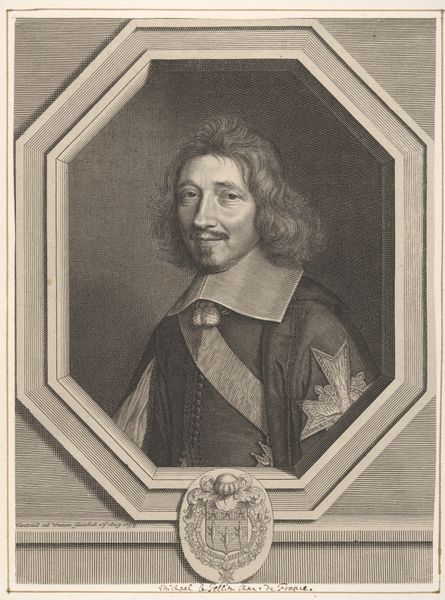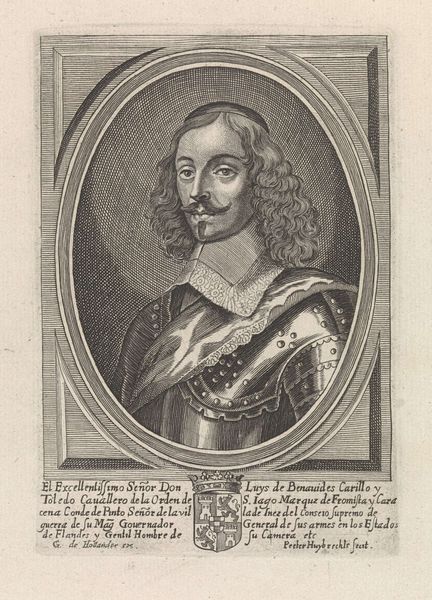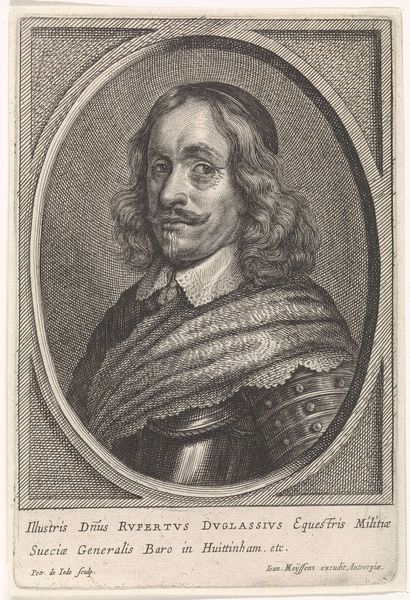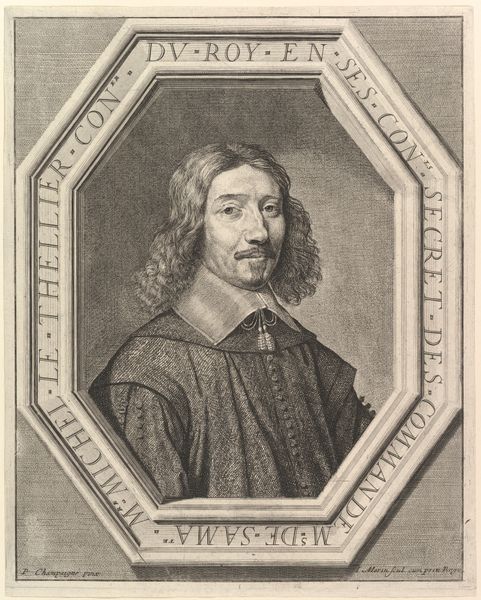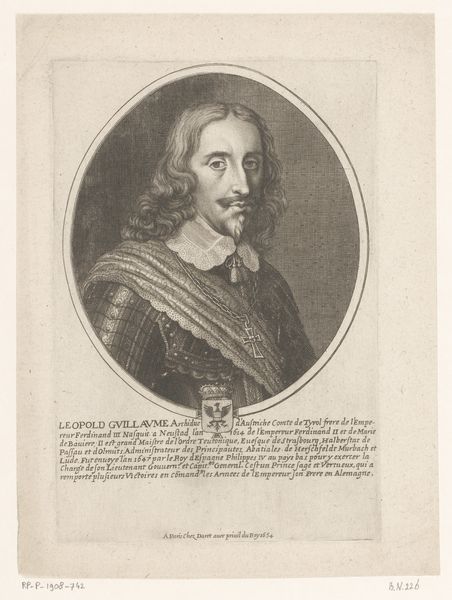
print, etching, engraving
#
portrait
#
weapon
#
baroque
# print
#
etching
#
old engraving style
#
history-painting
#
engraving
Dimensions: height 212 mm, width 145 mm
Copyright: Rijks Museum: Open Domain
Curator: Let’s consider this print of Sir William Waller, created by Pieter Rottermondt in 1643. Editor: My immediate impression is somber and resolute. There's a sternness in Waller's gaze, contrasting with the almost theatrical setting—the weaponry, the laurel wreath, the celestial figure above. The material itself, an etching, lends a sense of immediacy despite the grandiosity. Curator: The etching and engraving process is important here. Notice the linear precision Rottermondt achieved, detailing Waller's armor. The labor-intensive process was central to circulating images of power and political figures, almost a form of propaganda. The lines delineate social standing. Editor: Absolutely, and we should note the socio-political context. 1643 situates this portrait within the English Civil War. Waller was a prominent Parliamentarian general, which explains the backdrop of troops. This isn't just a likeness, it’s an articulation of power and justification of a political cause, widely available because it's a print. The very act of creating and distributing such images had a role in the conflict. Curator: Consider the materiality of the print—its reproducibility enabled mass dissemination. The network of workshops producing such prints was vital, showing us how visual imagery bolstered specific ideological and political ends. It moves portraiture from the sphere of unique painting to a repeatable object, thus expanding Waller's visibility and influence. Editor: And beyond its function, let’s reflect on its impact. We might view the image as both art and artifact. What does the inclusion of weaponry and angelic figures accomplish for contemporary audiences as well as viewers in future generations like us? The layers of history inscribed in this image open a vast scope to our own cultural positionality. Curator: Seeing it through that lens offers a more comprehensive understanding of its production, distribution, and intended influence. Thanks for providing a new depth for examining this etching. Editor: My pleasure. Examining it with attention to history allows us to appreciate this work within a particular turning point in time.
Comments
No comments
Be the first to comment and join the conversation on the ultimate creative platform.
